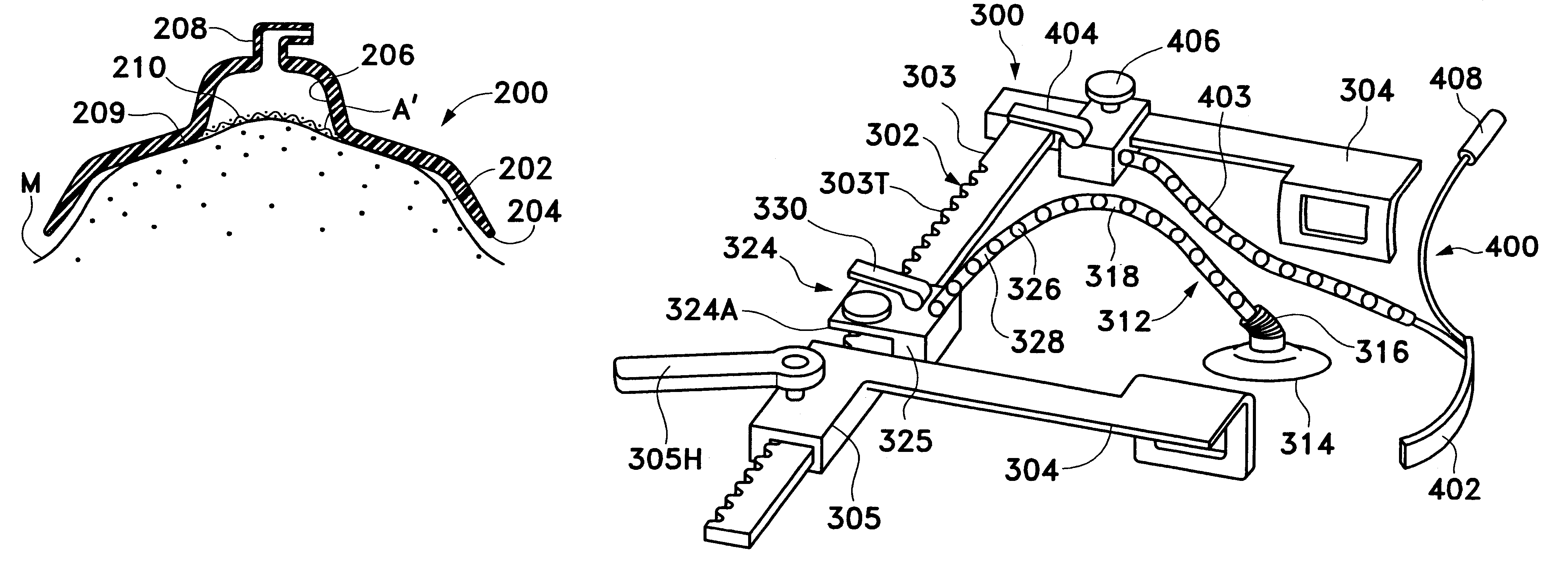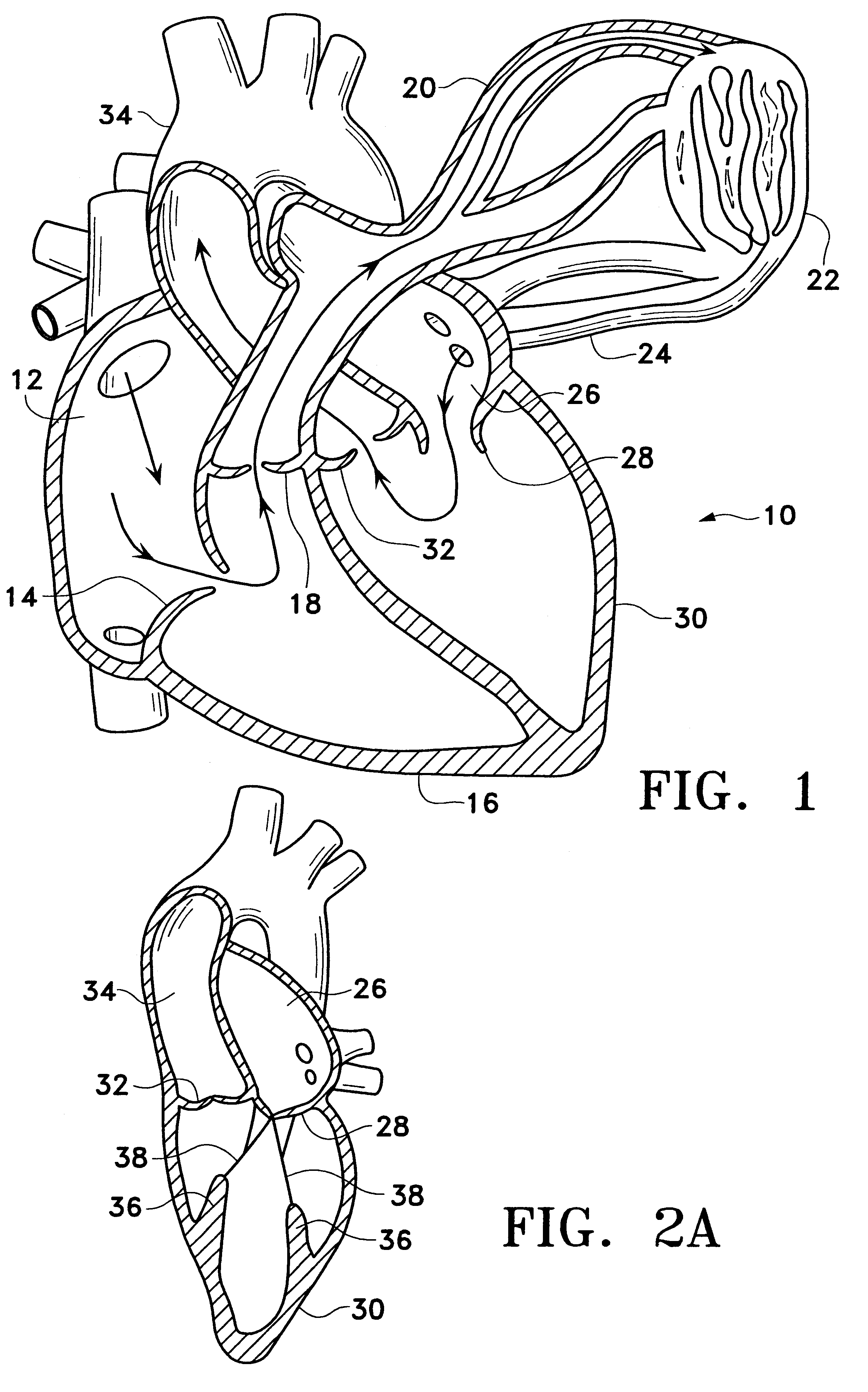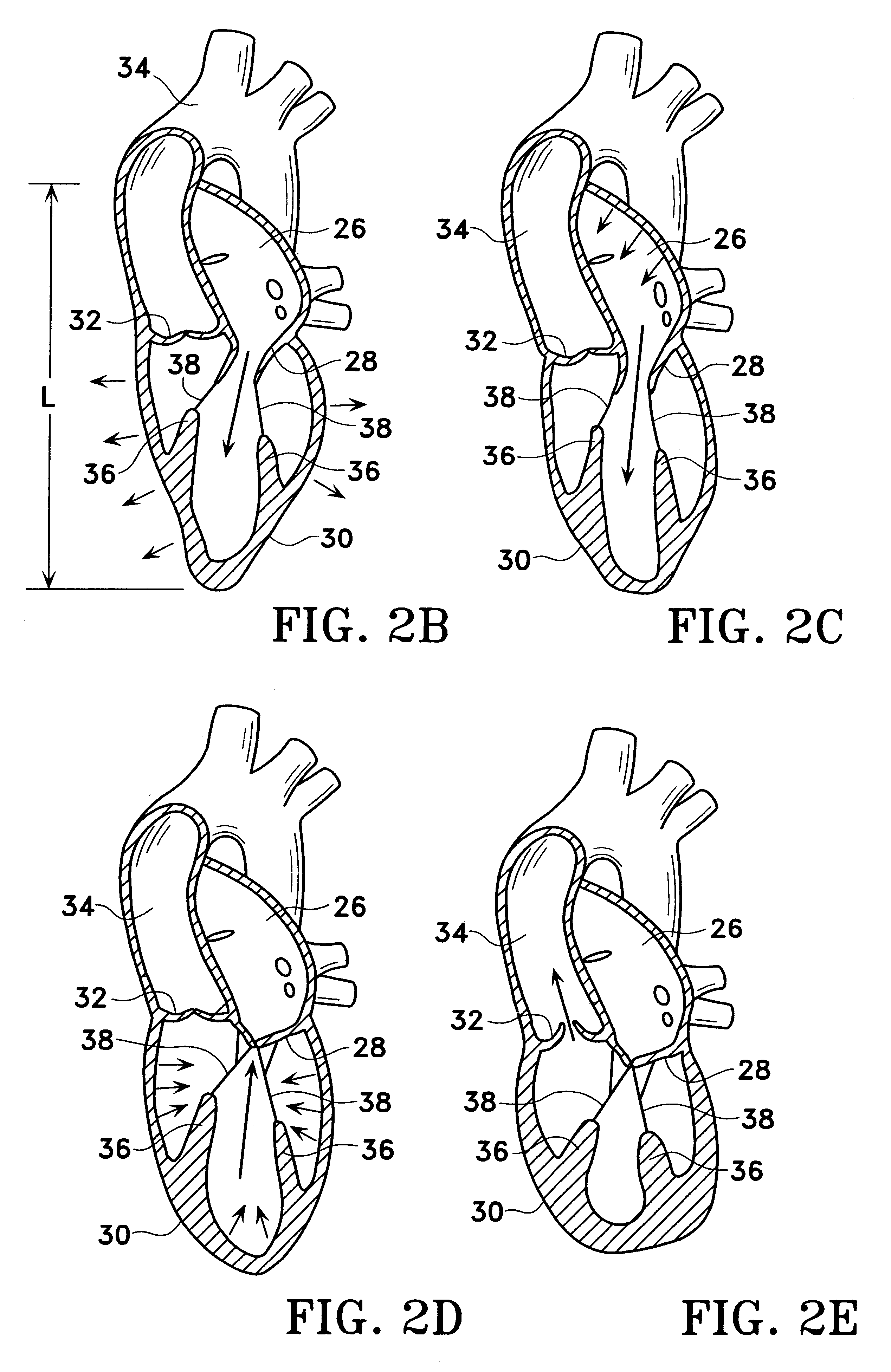Since the heart is stopped, the patient would suffer irreversible damage to the brain and other tissues and organs without the use of the heart-lung machine to support the general circulation.
Although the heart-lung machine has been refined, it is particularly toxic to older and debilitated patients and it is expensive.
It is possible to perform surgery off bypass, while the heart is beating and the coronaries are under positive blood pressure; however, there may be problems.
One problem is that not all vessels are accessible since some vessels are on the posterior or inferior surfaces and that when such vessels are brought into view by lifting the heart, cardiac performance is impaired such that the cardiac output falls and blood pressure drops.
A second problem is that the heart moves so that suturing in vessels (12 to 15 stitches in a vessel under 2 mm in diameter) might be inaccurate and a third problem is that there is blood in the field as the coronary circulation is not interrupted.
The problem of lifting the heart is not to impair the performance of the heart while at the same time adequately exposing the heart and regionally immobilizing the vessel during beating heart surgery, and this problem is not solved with any prior art system.
Lifting of the heart is deleterious to heart function for several reasons.
Second, the heart is distorted.
This shape is much less effective for ejection (the circle is the most effective as it has the highest ratio of volume to diameter) and flattening also limits the diastolic volume so that inadequate filling occurs.
Third, lifting pressure applied to a beating heart may deleteriously affect valve function of the heart, in particular, the mitral valve function may be adversely affected by such lifting.
If the heart is moved improperly, it may go into fibrillation.
However this is not satisfactory for a beating heart.
However, it is very difficult and tiring to keep the heart in a steady position.
Furthermore, the myocardium in contact with the assistant's fingers may be damaged by pressure, avulsion, and premature rewarming.
Further, the assistant's hand in the operative field can get in the way, and the assistant, who often stands next to the surgeon may restrict the surgeon's movements.
However, this tool is inadequate for actually lifting the heart to gain access to vessels located on the posterior and lateral surfaces (circumflex and right coronary distributions).
This device really is a local stabilizer, and cannot be adequately employed to assist in the lifting or moving of the heart, which is necessary in some instances, such as for a large heart, or the like.
Unfortunately, the device was not implicitly resigned for this function.
Vessel presentation during beating heart surgery is a different function and more complex since it must allow the entire heart to function.
Small suction heads, like the surgeon prefers for local immobilization, unfortunately cannot lift the heart and larger suction heads impair heart function by immobilizing too large an area around the suction head.
This will immobilize too much of the heart circumference to maintain effective heart function.
A suction cup applied to such a moving surface may have a tendency to become separated from the myocardium thereby interrupting the suction being applied to the heart.
Such interruption of suction may interfere with the attachment of the device to the heart.
However, this is not practical since too much of the myocardium might be influenced by such a solution.
This presents a serious problem since there are no easy reference points above the patient in which to attach these ties.
While the art has included several inventions intended to support the heart during coronary bypass surgery of the circumflex coronary artery, these inventions have several drawbacks that have hindered their acceptance in the art.
For example, the use of nets to support the heart exposes the heart to fine strands which impinge on the heart and may cause damage.
Furthermore, nets may impede the surgical target and require special techniques or procedures to remove the net from the surgical target area.
Flat cloth tapes are a form of net, and may damage the heart due to a rough texture of the cloth and the small area of contact between the tape strands and the heart.
Further, tapes and similar devices that do no have large surface areas contacting the heart may not support the heart in a uniform.
Still further, some prior art means for supporting the heart during cardiac surgery may tend to interfere with ventricle operation.
In some patients, an additional coronary blood supply, through the form of bronchial circulation, causes significant hemorrhage during the bypass grafting process.
This hemorrhage is inconvenient, as it masks the surgeon's view during the delicate suturing process, and threatens the well-being of the patient.
Performing surgery in this manner has several additional drawbacks, including the need to stop the heart, the need to insert special equipment and procedural steps to carry out the function of moving blood through the patient's body while the heart is stopped.
However, the continued operation of the heart will produce problems, in addition to the above-discussed problems, of forming a moving target for the surgeon.
This is not surprising since a median sternotomy and a run on the cardiopulmonary bypass pump are not well tolerates by some patients, combined with the added cost of coronary bypass equipment and staff.
The procedure results in considerable recovery time and is associated with a risk of death and major complication.
If the support is not fit to the particular heart, it may constrict the heart in some manner and thus interfere with the continued output of the heart.
 Login to View More
Login to View More  Login to View More
Login to View More 


